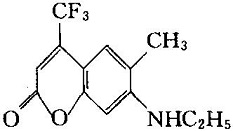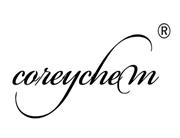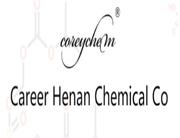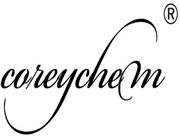| Brief Introduction |

It is also known as 1, 2-benzopyrone, cis ortho-caberillin, o-hydroxy cinnamon lactone and coumarin. It is contained in many natural plants in the form of glycosides and esters as vanillin instead of free-form. Coumarin will come out when certain plants are fermented and processed. Coumarin is found in the seeds of Dayton beans (Riccinechoides) in 1820 and is widely distributed in the plant kingdom, especially in plant species including Umbelliferae, Soybean, Rutaceae and Calyx. Seeds contain about 1.5% of the coumarin. In addition, coumarin is also contained in lavender oil, cinnamon oil and Peru balsam. Coumarin is spicy with sweet and lemongrass aroma. The aroma is emitted from the pink gum in the leaves of the fragrant beans, and the gum is made from the breakdown of the coumarin glycosides in the leaves. The aroma emitted by Sweet alfalfa is actually from the release of coumarin due to fermentation and decomposition during the stacking process. Precipitate from the ether appears as orthorhombic white pyramid or oblique sheet-like crystals with Lemongrass-type smell. It can subject to sublimation. |
| Chemical Properties |
Golden crystalline solid (fronds or rhomboid); it is sweet with black beans-like aroma, dried herbs aroma and fennel aroma. After dilution, it smells like dried straw, nuts and tobacco. It is insoluble in cold water but soluble in hot water, ethanol and chloroform, easily soluble in ether and benzene. The solubility in 100ml of water at 25 ℃ is only 0.01g; 13 7g in 100ml of ethanol at 16 ℃; 1g in 50 mL 100℃ hot water. Oral LD50: 680mg / kg for rat. |
| Uses |
used as a spice for the preparation of floral fragrances such as lavender, rosemary and rosemary, used in perfumes, cosmetics, soaps and detergents; used as flavoring agents for blending fragrances to make the aroma be lasting and unchanged; used as an electroplating additive to prevent the occurrence of pores in coating and can increase the brightness; as the flavor enhancer of printing ink and plastic; formerly used as spices and cigarettes spices, banned from 197; Since then, China had also prohibited it application in food; used as pharmaceutical raw materials.
Coumarin, as a laser dye, has an output laser range be within the blue-green region (420 ~ 570nm), has high fluorescence quantum efficiency, such as 7-ethylamino-6-methyl-4-trifluoromethyl coumarin Lactone 307), the structure is as follows: |
| Chemical Properties |
WHITE CRYSTALS OR CRYSTALLINE POWDER |
| Uses |
Pharmaceutic aid (flavor). Found in tonka beans, levender oil, woodruff, sweet clover. |
| Uses |
antineoplastic, antiinflammatory, antihyperglycaemic |
| Uses |
coumarin is considered a blood thinner, it can also increase blood flow. Some sources cite anti-oxidant capacities, as well. It is a specific plant constituent and is what creates the fragrance of freshly mowed hay. Coumarin is found in such plants as cherries, lavender, licorice, and sweet clover. |
| Definition |
ChEBI: A chromenone having the keto group located at the 2-position. |
| General Description |
Colorless crystals, flakes or colorless to white powder with a pleasant fragrant vanilla odor and a bitter aromatic burning taste. |
| Air & Water Reactions |
Insoluble in water. |
| Reactivity Profile |
Coumarin is sensitive to exposure to light. Coumarin is also sensitive to heat. Coumarin is incompatible with strong acids, strong bases and oxidizers. Coumarin is hydrolyzed by hot concentrated alkalis. Coumarin can be halogenated, nitrated and hydrogenated (in the presence of catalysts). |
| Health Hazard |
SYMPTOMS: Exposure to Coumarin may cause narcosis. It may also cause irritation and liver damage. |
| Fire Hazard |
Coumarin is combustible. |
| Contact allergens |
Coumarin is an aromatic lactone naturally occurring in Tonka beans and other plants. As a fragrance allergen, it has to be mentioned by name in cosmetics within the EU |
| Safety Profile |
Poison by ingestion, intraperitoneal, and subcutaneous routes. Questionable carcinogen with experimental tumorigenic data. Experimental teratogenic effects. Mutation data reported. Combustible when exposed to heat or flame. When heated to decomposition it emits acrid smoke and fumes. See also KETONES and ANHYDRIDES. |
| Purification Methods |
Coumarin crystallises from ethanol or water and sublimes in vacuo at 43o [Srinivasan & deLevie J Phys Chem 91 2904 1987]. [Beilstein 17/10 V 143.] |

 China
China









